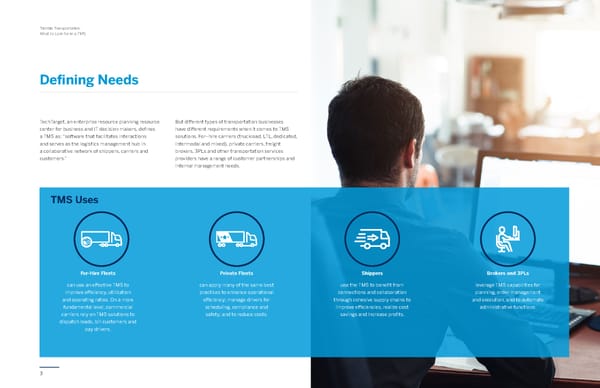3 Trimble Transportation What to Look for in a TMS Defining Needs TechTarget, an enterprise resource planning resource center for business and IT decision makers, defines a TMS as: “software that facilitates interactions and serves as the logistics management hub in a collaborative network of shippers, carriers and customers.” But different types of transportation businesses have different requirements when it comes to TMS solutions. For–hire carriers (truckload, LTL, dedicated, intermodal and mixed), private carriers, freight brokers, 3PLs and other transportation services providers have a range of customer partnerships and internal management needs. TMS Uses For-Hire Fleets can use an effective TMS to improve efficiency, utilization and operating ratios. On a more fundamental level, commercial carriers rely on TMS solutions to dispatch loads, bill customers and pay drivers. Private Fleets can apply many of the same best practices to enhance operational efficiency; manage drivers for scheduling, compliance and safety; and to reduce costs. Shippers use the TMS to benefit from connections and collaboration through cohesive supply chains to improve efficiencies, realize cost savings and increase profits. Brokers and 3PLs leverage TMS capabilities for planning, order management and execution, and to automate administrative functions.
 What to Look for in a TMS Page 2 Page 4
What to Look for in a TMS Page 2 Page 4